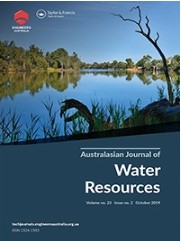The Influence of Statutory Land Use Planning on Water Sensitive Design Practices
Abstract
Regulation, including statutory land use planning law, is seen as an important way to encourage the adoption of water sensitive urban design (WSUD) practices. Despite this, there has been little empirical investigation of how statutory land use planning influences the uptake of WSUD practices, and how planning frameworks could be redesigned, to better support WSUD. The influence of statutory planning on WSUD practices was investigated in four case studies, two from Victoria and two from Western Australia. The case studies considered how statutory planning influenced four discrete components of WSUD practice. In the case studies, statutory planning did encourage the adoption of WSUD practices. The capacity of statutory land use planning to encourage WSUD practices was enhanced when statutory planning included specific quantitative targets and when it encouraged the adoption of these practices at the localised, street scale. The research also found that statutory land use planning interprets the WSUD concept, by encouraging specific practices. These practices, in turn, reinforce our assumptions about what WSUD might be.
